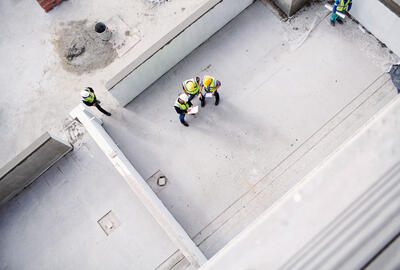architecture jobs.
what does an architect do?
Design new buildings or alterations and extensions to existing structures. This may include restoration projects on listed buildings or conservation efforts.
You may also design the surrounding landscape and spaces of a large development plot such as a housing development or business estate.
In a leadership role, you will liaise with clients and users to ensure designs are fit for purpose, functional, safe and economical. From start to finish you will work closely with a range of construction workers specifically surveyors and engineers.
how much do architects get paid?
As a part 1 architectural assistant expect between £18,000 and £22,000 rising to £35k with enough experience as a part 2 assistant.
Fully qualified architects (Part 3) can earn between £32,000 and £45,000 and senior, partners or directors can expect £45k to £70k.
architect job description.
Primarily office based with off-site visits to clients and sites, travel can be high and overnight stays common. Mileage or a company car may be offered in some situations. Safety gear will be required on-site but should often be provided by the site.
In a creative role speaking with clients can be interesting to hear and facilitate ideas. Designing a white box into an interesting living space is rewarding and should be fun to design. It can be challenging to make a broad idea into a practical reality, so you need to be persuasive and confident but also accept compromise in budget and scope of plans.
In 2016 the Architects Registration Board Annual Report found 26% of 38,500 registered architects in the UK were female. This representation is still low but improving with opportunities into the industry increasing.
how to get a job as an architect.
Starting early is key. At A-level getting, experience between your break and university will give you an advantage in your career. As will doing the same during university breaks show employers how passionate you are.
If you are socially active, creating an Instagram account to show off your portfolio, ideas, a creative mind and rough ideas can make your profile stand out and represent a dedication to your craft.
When designing a CV or portfolio, ensure it reflects the quality of your work and there is a coherent link between both. It should represent who you are and who you have a passion for. You need to be able to sell it and yourself in interviews concisely.
Looking for journals and publications or TV programmes about buildings and current trends in architecture and design will both broaden your mind and provide you with a tonne of talking points in interviews.
what qualifications do I need for architecture?
Most architects will enter a job with a degree, but other routes from the RIBA (Royal Institue of British architects) offer practise based and architecture apprenticeship jobs.
Universities will often conduct interviews prior to entry to ensure a full inspection of the portfolio and person. This will provide you the opportunity to own your skills and experience and promote your work and your passion.
In order to be recognised with the title architect, you need to register with the ARB (Architects Registration Board). A chartered architect should be a member of RIBA but it is not a legal requirement.
A standard route of architecture involves 7 years in training and education.
Part 1 - approved first degree (3 - 4 years)
Stage 1 practical experience - 12 months of professional experience, across the construction, building and architects' businesses.
Part 2 - two years of study for a diploma, further degree or Masters in architecture.
Stage 2 practical experience - 12 months of further experience to qualify for part 3's examination.
Part 3 - examination in professional practice and management. This involves a written and oral exam and assessment of the 24 months' practical experience. This will allow you to register with the ARB.
RIBA Studio in partnership with Oxford Brookes University is open to people with 3 years of experience for part 1 and 2 able to complete through self-study whilst working a full-time job.
designer jobs.
what designer jobs are there?
Working across a broad environment, graphic designers offer a general-purpose solution to all designing needs. This can be across websites, print, games and corporate identity. If you have a passion for architecture and visually pleasing places, an urban designer might interest you for your next job. Monitoring the external environment of builds you can specialise in urban, rural, spatial or general creating spaces, parks, buildings or cities.
working as a designer.
People skills may be essential to some roles in order to talk to clients and understand their needs, then discuss with them changes or solutions to problems. You may be working across multiple projects at once and need to keep a strong diary to organise priorities and meet deadlines. But it will also be key to have a constant flow of creative juices to stay energised at work, so a balance is required between organisation and creative thinking.
what qualifications do I need?
Subjects that include the visual arts will be useful to have a degree in such as:
- 3D design
- communication design
- film/television
- fine art
- illustration
- photography
- graphic design.
Some roles won't require a degree or HND and look more for a portfolio and experience. However, without formal training advancement in your career can be difficult to higher positions that will require a formal degree.
architecture and design articles.
-
 16 April 2025
16 April 2025fintech translators bridge the gap between technical AI and finance.
-
 16 April 2025
16 April 2025future-proofing your fintech career: mastering the art of human-AI collaboration.
-
 15 April 2025
15 April 2025supporting SEND and SEMH in UK Schools.
-
 10 April 2025
10 April 2025how AI is reshaping entry level finance jobs and career pathways.
-
 10 April 2025
10 April 2025AI in accounting: essential skills for the next decade of financial services.
-
 10 April 2025
10 April 2025the power of peer feedback for transforming care performance.
-
 09 April 2025
09 April 2025understanding complex care: a vital focus in modern healthcare.
-
 03 April 2025
03 April 2025tariffs, trade and turbulence: the evolving economic landscape - event overview.
-
 03 April 2025
03 April 2025turning spreadsheets into data strategy: AI's impact on finance careers.
-
 01 April 2025
01 April 2025making social value work: a practical guide for facilities management.
-
 26 March 2025
26 March 2025shifting the narrative: humanising language in social care.
-
 25 March 2025
25 March 2025negotiating a pay rise in the site engineering industry.


